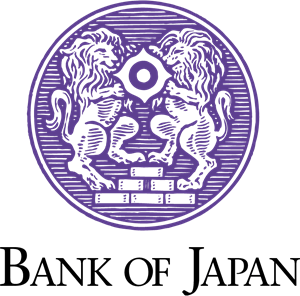“Explore the seismic shift as Japan bids farewell to negative interest rates in this comprehensive guide. Discover five pivotal shifts shaping the transition, including recent updates and insights into the economic, financial, and global ramifications of this historic policy reversal.”

Introduction:
For over a decade, Japan has been entrenched in a financial landscape characterized by negative interest rates, a radical monetary policy aimed at stimulating economic growth and combating deflation. However, recent developments suggest a seismic shift on the horizon as Japan prepares to bid farewell to negative interest rates. In this comprehensive guide, we’ll explore five pivotal shifts shaping Japan’s departure from negative interest rates, incorporating recent updates and insights into this historic transition.
1. Policy Reversal:
After years of negative interest rate policies, Japan’s central bank has signaled a significant policy reversal, marking a departure from the unconventional monetary measures of the past. Recent updates indicate a growing consensus among policymakers that the costs of negative interest rates, including the impact on financial institutions and savers, outweigh the benefits. This shift in policy direction reflects a renewed focus on restoring normalcy to Japan’s monetary policy framework and addressing long-standing challenges in the financial sector.
2. Impact on Financial Institutions:
The end of negative interest rates in Japan carries profound implications for financial institutions, which have grappled with compressed profit margins and the adverse effects of prolonged monetary easing. Recent updates highlight concerns among banks about the potential erosion of interest income and the need to adapt their business models to a rising rate environment. As Japan transitions to a post-negative interest rate era, financial institutions must navigate the challenges of a shifting interest rate landscape while pursuing sustainable growth and profitability.

3. Investor Sentiment and Market Dynamics:
The prospect of Japan’s exit from negative interest rates has reverberated across global financial markets, impacting investor sentiment and reshaping market dynamics. Recent updates indicate a cautious optimism among investors as Japan’s central bank signals a gradual normalization of monetary policy. However, uncertainties surrounding the timing and pace of policy tightening have contributed to volatility in bond markets and currency fluctuations. As investors recalibrate their strategies in anticipation of higher interest rates, asset prices and market valuations are likely to undergo adjustments.
4. Economic Implications:
Japan’s transition away from negative interest rates carries significant economic implications, both domestically and internationally. Recent updates suggest that higher interest rates could lead to a tightening of financial conditions, potentially dampening investment and consumption. However, the shift towards a more conventional monetary policy stance may also signal confidence in Japan’s economic recovery prospects and contribute to a normalization of inflation expectations. As policymakers navigate the delicate balance between supporting growth and containing inflationary pressures, the trajectory of Japan’s economy in a post-negative interest rate environment remains uncertain.
5. Global Ramifications:
The end of negative interest rates in Japan has broader implications for the global economy, given Japan’s status as the world’s third-largest economy and a major player in international financial markets. Recent updates indicate that Japan’s policy reversal could influence the stance of other central banks grappling with ultra-loose monetary policies. Moreover, the unwinding of negative interest rates in Japan may contribute to shifts in global capital flows, currency dynamics, and cross-border investment patterns. As policymakers and market participants adapt to Japan’s changing monetary policy landscape, the reverberations of this historic transition are likely to be felt worldwide.

Conclusion:
Japan’s farewell to negative interest rates marks a pivotal moment in the country’s monetary policy history and has far-reaching implications for financial markets, economic dynamics, and global geopolitics. As Japan embarks on this unprecedented transition, policymakers, financial institutions, investors, and stakeholders must navigate the challenges and opportunities presented by a post-negative interest rate era. By understanding the key shifts shaping Japan’s departure from negative interest rates and staying attuned to recent updates and developments, stakeholders can better position themselves to thrive in the evolving financial landscape of the future.
Disclaimer:
The information provided in this blog is for educational and informational purposes only. While we strive to present accurate and up-to-date information, we make no representations or warranties of any kind, express or implied, about the completeness, accuracy, reliability, suitability, or availability of the information contained herein. Any reliance you place on the information provided is strictly at your own risk. We are not liable for any losses or damages arising from the use of the information in this blog. It is recommended to consult with financial professionals or experts for specific advice tailored to your individual circumstances.




